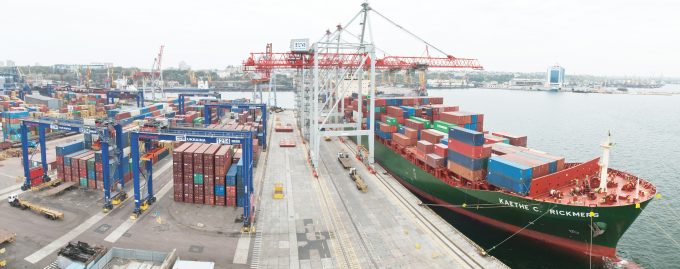Liners unveil Asia-Europe FAK price hikes to arrest steady rate decline
Container shipping lines are looking for a hike in Asia-Europe spot freight rates, announcing a ...

2M partners Maersk and MSC have the largest share of the Black Sea container shipping markets, according to research by East European transport analyst Informall.
However, they will be looking over their collective shoulder at the line that gained most market share, year-on-year: Turkish operator Arkas.
In the first quarter of this year, the Black Sea container market – Russia, Ukraine, Bulgaria, Romania and Georgia – amounted to 587,000 teu, a figure that includes handling empty containers but not transhipment activity.
Laden containers made up 426,000 teu of that, with an import/export ratio of 52:48, in percentage terms.
Volumes in the first quarter of 2016 were 3% down on the same period in 2015, a drop primarily driven by a steep decline at Georgia’s ports, which were down nearly 37% year-on-year, and offset the 5% and 6% increases in seen in Ukrainian and Russian ports respectively.
The period saw MSC and Maersk switch first and second positions, with MSC’s market share declining 1.5% and Maersk’s increasing 1.%.
Together, the world’s two largest carriers held a combined market share of 45%, despite the fact that the revised 2M Asia-Mediterranean network no longer features direct deepsea calls from Asia, with all Black Sea boxes transhipped at the Istanbul port of Ambarli.
The lessening importance of direct services out of Asia is further demonstrated by the fact that it was Arkas that gained most market share year-on-year. Arkas, which saw its market share grow from 7.4% to 10%, has only a network of feeder services across the Black Sea out of its hubs in Istanbul.
Similarly, despite CMA CGM operating the largest vessels in the region – 6,000 teu units deployed on its direct Asia-Black Sea Bosporus service – the French carrier was the second largest loser of market share, after MSC, 12.15% to 11%. And, interestingly, while the 2M partners saw their combined market share decline 0.5%, the O3 Alliance’s combined market share grew 0.3% to 16.8%.
The growth at Arkas made it the fourth-largest carrier in the region, pushing Zim into fifth – the Israeli carrier’s liftings remaining stable – and the positions of both emphasise the strength of niche regional players as some deepsea carriers abandoned the region altogether, according to Informall.
The analyst said: “It has to be mentioned that in 2015 there were some structural changes in the Black Sea container market. For example, Wan Hai and K line temporarily suspended their activity, while CSAV merged with Hapag Lloyd, which is why CSAV volumes significantly decreased.
“At the same time, a new player had entered the Ukrainian container market – Turkon – which is a well-known player on the Mediterranean-North American trade. Entering this market on a slot agreement basis with Admiral Container Line, Turkon tried to find an opportunity to grow business and, after the first quarter in 2016, it has 0.25% share of total laden container volume in the region, and now has a positive trend for further growth,” it added.
In terms of container gateways, DP World’s facility at the Romanian port of Constanza remains the largest terminal in the region, followed by Novorossyisk’s NLE, the HPC Odessa terminal run by the local subsidiary of Hamburg port operator HHLA. APM Terminals’ Poti dropped from second last year to fourth, as volumes plummeted, and Novorossyisk’s NUTEP dropped from third to the fifth place.
Comment on this article